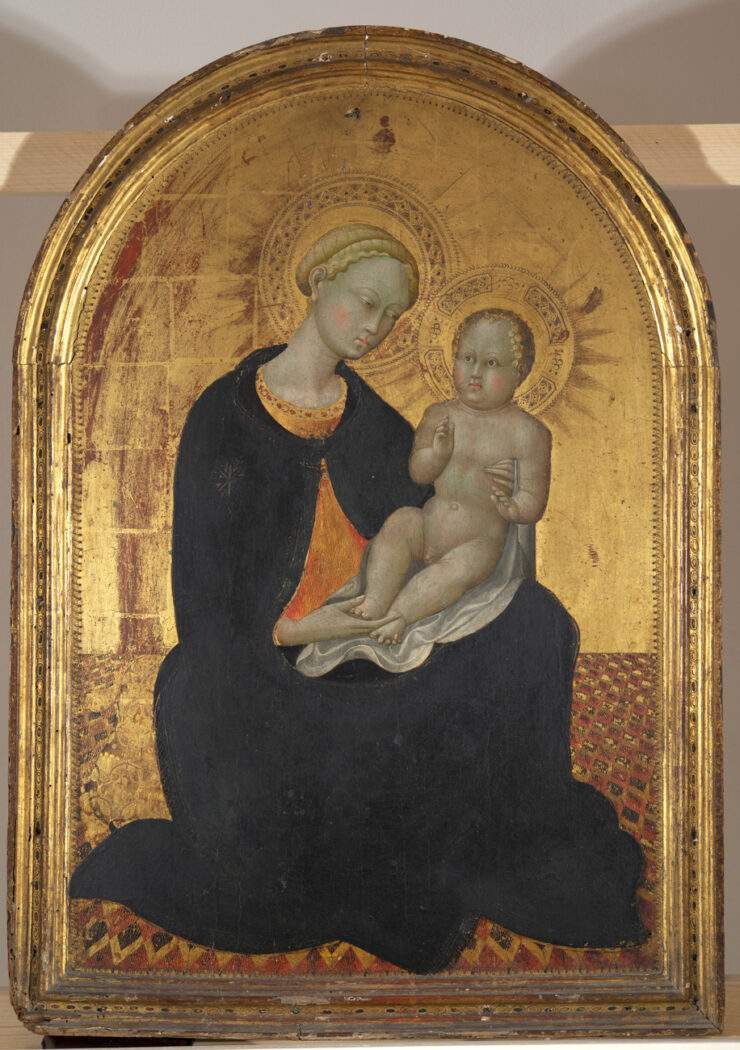A Madonna and Child by Sassetta (Stefano di Giovanni; Cortona?, c. 1400 - Siena, 1450), one of the greatest Sienese painters of the 15th century, will be restored with an intervention promoted by the Siena delegation of the FAI - Fondo Ambiente Italiano, which has raised the necessary funds for the operations, and conducted by restorer Jacopo Carli under the aegis of the Superintendence of Siena, Grosseto and Arezzo (director of the work will be art historian Alessandro Bagnoli, currently among the leading experts on Sienese painting).
The painting is kept at the Museo dell’Opera del Duomo in Siena: it is not known for whom this Madonna and Child was made, but it is almost certainly a work intended for private devotion. At some point in history (it is not known when) the work arrived at the parish church of San Giovanni Evangelista in Basciano (near Monteriggioni, on the outskirts of Siena), where it was catalogued in 1862 by Francesco Brogi and attributed to another important 15th-century Sienese painter, Giovanni di Paolo (Siena, 1398 - 1482). To attribute it to Sassetta was, in 1914, the American art historian and collector Frederick Mason Perkins, long active in Italy and a great connoisseur of Sienese art. Raimond von Marle and Bernard Berenson also argued in favor of attributing it to Sassetta, while John Pope Hennessy and Enzo Carli considered it to be the work of his workshop. Following the cleaning that the painting underwent in 1963 in preparation for a major exhibition on art in Valdelsa held in Certaldo, Paolo Dal Poggetto and Roberto Longhi argued in favor of attributing it to the master.
The new intervention, strongly advocated by Alessandro Bagnoli, will involve the consolidation of the wooden structure and a new cleaning to restore a correct legibility of the tempera colors (Jacopo Carli has let it be known that the intervention also aims to restore the original chromatic contrasts, which will enhance the brilliance of the figures and the refinement of the decorations). “Today, this precious pictorial ’relic,’” Bagnoli said, “needs careful conservation of the wooden structure and light cleaning, which will enhance the tenderness of the tempera painting and the many exquisites in faking the Madonna’s silken robe, the multicolored textured cloth cushion and the tiled floor in perfect perspective foreshortening, using the leaves of’gold of the background, which are appropriately veiled in translucent colors and finely sgraffitoed, according to that refined procedure that had been perfected by Simone Martini and brought to perfection by Gentile da Fabriano at the opening of the 15th century.”
According to Bagnoli, the Madonna is one of Sassetta’s earliest works and can be dated to the 1530s: it would be a panel to be linked to the polyptych in the Museum of Sacred Art in Cortona, where the Madonna and Child has similar features to the one from the church in Basciano.
 |
| Siena, FAI supports restoration of Sassetta's Madonna and Child |
Warning: the translation into English of the original Italian article was created using automatic tools. We undertake to review all articles, but we do not guarantee the total absence of inaccuracies in the translation due to the program. You can find the original by clicking on the ITA button. If you find any mistake,please contact us.